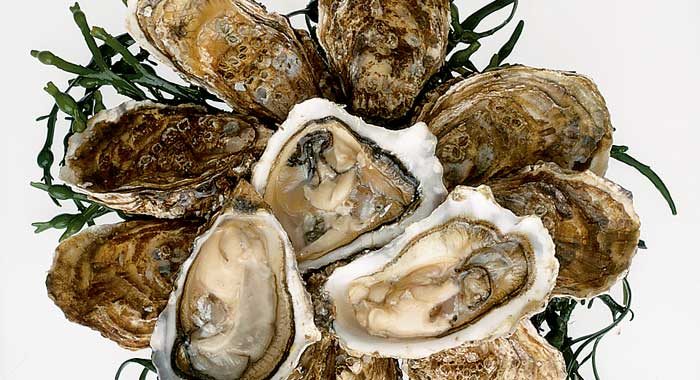Oysters are a nutrient-rich food with many health benefits. These shellfish contain vitamins and minerals that promote immune system health, metabolism, and cell growth.
They are also an excellent source of protein. They provide all nine essential amino acids and have been proven to boost weight loss, blood sugar control and heart health.
Overview of Oysters as a Food Source
Oysters are bivalve mollusks that live in saltwater environments. They have a heavily calcified shell and can be caught wild or produced using aquaculture.
Oysters feed by filtering water, consuming dissolved minerals, plankton, and algae. This process helps to prevent eutrophication, the buildup of excess nutrients in water.
They also help clean the ocean by removing suspended sediments, nitrogen, bacteria, and algae. This is beneficial for habitats and for creatures that do not directly interact with oysters.
Oysters can be consumed raw, or cooked in many different ways. They are a popular culinary delicacy, and have a long history in cooking.
Culinary Uses and Traditional Dishes
Oysters are a versatile shellfish that can be enjoyed in a variety of culinary applications. They’re delicious raw, steamed, fried, grilled, or stewed and can be served alongside a variety of dipping sauces.
One traditional dish featuring oysters is charbroiled, originating from New Orleans. Freshly shucked Louisiana oysters on a half shell are placed on the grill and cooked until bubbling and the edges start to curl.
Another classic oyster recipe is baked in a bread crumbs, cheese, onion, mushroom, shrimp, wine, and butter roux. This is a popular appetizer at many restaurants in New Orleans.
Availability and Market Trends
The availability of oysters in the market is expected to increase due to rising demand from various restaurants and supermarkets worldwide. In addition, growing consumer awareness about the health benefits of consuming oysters has also fueled their growth.
Oysters are bivalve molluscs that live in brackish and saline habitats. They have two hinged parts and use their gills and cilia to move through the water and feed.
Oyster farming is a sustainable and environmentally-friendly process that is becoming increasingly popular. Oysters are consumed in various culinary dishes, including sushi and other seafood preparations. They are also used as a snack or appetizer with drinks.
Health Benefits and Concerns
Oysters are a delicious, low-calorie food that’s packed with essential vitamins and minerals. They’re also high in protein, which is an important part of a well-balanced diet.
They’re also a good source of omega-3 fatty acids, which have heart health benefits and can help reduce inflammation. Plus, oysters contain a natural antioxidant called DHMBA that may protect liver cells from damage by oxidative stress.
In addition, oysters have a lower mercury content than some other types of seafood. However, they do contain other contaminants such as viruses and bacteria.
Sustainability Issues
Oysters are an ecologically important species, providing a range of ecosystem services in estuaries including water filtration and habitat construction. Their long-term survival depends on careful management of harvests, sanctuaries and the restoration of oyster reefs.
Sustainability issues have implications for both pearl farmers and oyster lovers alike. On islands where pearl farming occurs, for example, communities are affected by rising sea levels and increasing salinity.
Oyster aquaculture can also affect water quality in estuaries by filtering algae and removing nutrients such as nitrogen. Coastal resource managers are looking into oyster aquaculture as an alternative to traditional fertilizer and other nutrient removal approaches.

